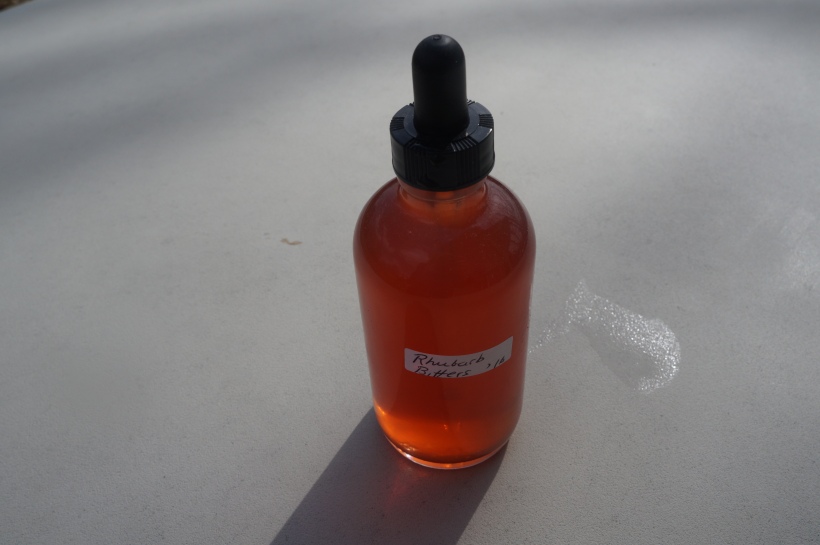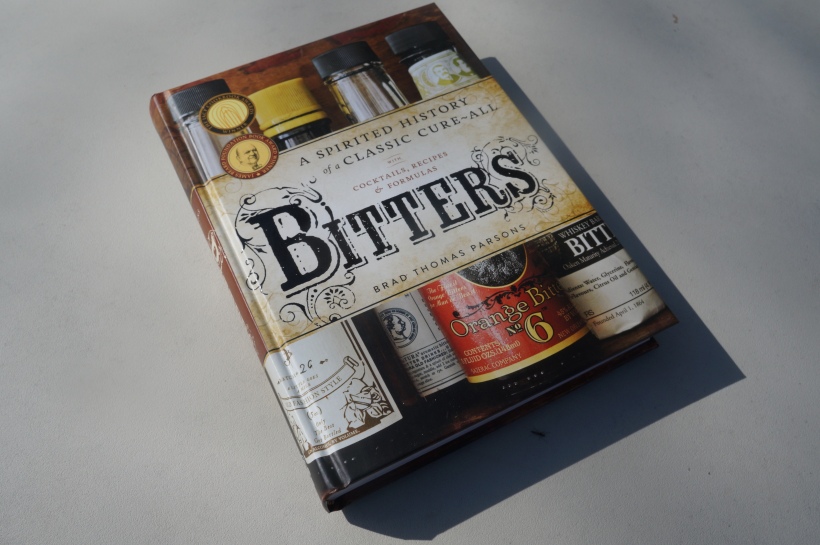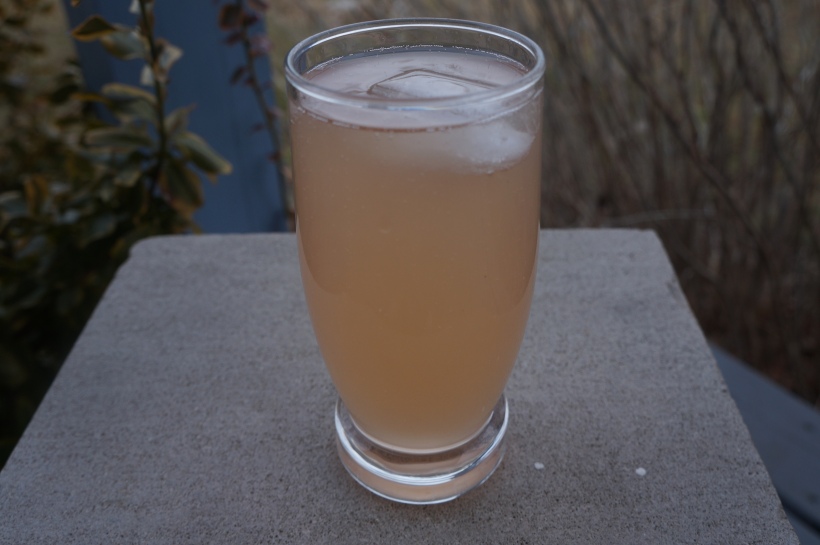 Until recently, bitters were just something I kept in the liquor cabinet for the odd occasion when a cocktail was called for. Since my lone bottle was not getting a lot of attention, I started to add it to some savoury recipes for a little extra zing. Without really understanding what bitters were, my ideas for its uses were somewhat limited.
Until recently, bitters were just something I kept in the liquor cabinet for the odd occasion when a cocktail was called for. Since my lone bottle was not getting a lot of attention, I started to add it to some savoury recipes for a little extra zing. Without really understanding what bitters were, my ideas for its uses were somewhat limited.
Lately bitters have been garnering a lot more attention, and rightly so since they can enhance the flavour and aroma not only of cocktails but myriad dishes including pastries, desserts, grilled anything to name just a few. Once I realized the variety of flavours on the market (for example orange, lemon, coffee pecan, cardamom, celery) I determined to find out more about this promising concoction and how I could make my own.
So I bought a book. This one is by Brad Thomas Parsons and is called A Spirited History of a Classic Cure-All with Cocktails, Recipes & Formulas BITTERS. It is a riveting read about the convoluted history of this tonic, its uses, sources and how to make it. He offers a definition of bitters which I found very helpful to understand what to expect.

“Bitters are an aromatic flavoring agent made from infusing roots, barks, fruit peels, seed, spices, herbs, flowers and botanicals in high-proof alcohol (or something glycerine). … One of the biggest misconceptions about bitters is that using them will make your drink bitter. Although this is understandable – tasted by themselves, bitters often taste slightly bitter or bittersweet – the term “bitters” refers not to a specific flavor but rather to the category of aromatic solutions made with bittering agents such as gentian root and cinchona bark. Bitters are essentially a liquid seasoning agent for drinks and even food…”
After reading several of the recipes, I figured I would have to tweak them as the ingredients were numerous, sometimes unknown, and often difficult to find. But tweaking works, as long as you have a combination of alcohol, principal flavour, bittering agents and and assortment of spices, herbs, flowers etc. These recipes also allow me to use some of my own cultivated or foraged plants, such as hops, wild cherry bark or dandelion leaves.
Since rhubarb season is soon upon us, I decided to follow the recipe for rhubarb bitters making a few changes according to what I had available. Since my rhubarb is greener than what is recommended, something that does not affect the taste, I decided to enhance the colour with a couple of reds, namely dried hibiscus petals and highbush cranberry sauce. Most of the unusual ingredients, like cinchona bark, can be found at a good herbalist’s, such as Herbie’s Herbs in Toronto.
The basic method is to infuse the ingredients in alcohol (usually vodka, bourbon or rye) for two weeks. After straining this infusion, set the liquid aside and add some water to the solids and cook briefly. Allow that to sit another week. Strain and combine the two liquids. Add a little honey and allow to sit for another three days.
Rhubarb Bitters
Ingredients
2 cups chopped rhubarb
zest of 2 organic lemons
2 Tbsp highbush cranberry preserve
1/2 tsp coriander seeds
3 juniper berries
1 tsp fennel seeds
1/2 tsp cinchona bark
1 Tbsp dried hibiscus flowers
2 cups vodka
water
2 Tbsp honey
Method
Place all the ingredients except vodka, honey and water in a jar. Pour in the vodka and give it a good stir. Allow to sit for two weeks in a cool place away from direct sunlight, and give it a shake daily.
After two weeks, strain* out the liquid and set aside in a jar. Place the solids in a saucepan, cover with water, bring to a boil, reduce the heat, cover and simmer for ten minutes. Pour this mixture into a jar and store for a week out of direct sunlight and give it a shake daily.
Strain* this mixture, combine the two liquids in a jar and stir in the honey. Set aside for three days and again, shake daily.
*To strain, I first use a regular sieve to remove the majority of the solids, then I strain it through a funnel lined with a coffee filter. This takes some time, but the result is clear and requires no additional filtering.
This same method can be used for virtually any combination of flavours – I look forward to creating more flavours using local and seasonal ingredients. This recipe makes about 2 cups of bitters. At first I thought this might be excessive, but having tried it I know I will have plenty of ways to use it, some of which I hope to share in future posts.

As a first taste test of the final results I made a very simple soda and bitters drink. I used about 1 oz. of bitters and 6 of soda, but mix according to your own taste. As Parsons explained, the result was far more aromatic than bitter, and a very light and pleasant drink.
Linked to Fiesta Friday #111, Naina at Spice in the City and Julianna at Foodie on Board.


March 18, 2016 at 1:11 pm
Wow. Very cool. Thanks for sharing this. I had never thought of making my own bitters!
LikeLiked by 1 person
March 18, 2016 at 1:15 pm
Thanks Christina. I hadn’t either, but now I am wondering why!
LikeLiked by 1 person
March 18, 2016 at 1:45 pm
Everytime I visit your blog I always learn something new. I have a bottle of vodka that’s not being used; I can probably turn it into a bitters? Does the rhubarb give it a sour taste? Which I would love! Btw, Hilda, you haven’t confirmed if you’ll be able to co-host next week. Please let me know.
LikeLike
March 18, 2016 at 1:57 pm
First of all, sorry about the not confirming. I must have missed something, but yes, I would be happy to oblige.
The flavour with the rhubarb and other ingredients is such a complex result it would be difficult to describe with just one word. I could taste a floral and sour flavour with a pleasant hint of sweetness. There is a faint taste of licorice, I expect from the fennel seeds. I was thinking it would be a great activity to just name all the flavours that are in this drink. And of course you can make it more or less sour, bitter, sweet or whatever you like just by fiddling with the proportions. I hope you do give it a try.
LikeLiked by 1 person
March 18, 2016 at 2:05 pm
Thanks! Your co-host is Natalie @ Kitchen Uncorked. I’m set to give the bitters a try. Not sure I’ll be using as many ingredients but
LikeLiked by 1 person
March 18, 2016 at 2:07 pm
I wasn’t finished typing, aargh! Anyway, yes to the bitters. I just need to find rhubarb. I have a rhubarb plant but too small still.
LikeLiked by 1 person
March 18, 2016 at 2:13 pm
You could also do it with any kind of citrus flavour. For example there is a recipe for grapefruit using: grapefruit zest, dried peel, gentian root, coriander and cardamom seeds and dried hops. I think I want that one too!
LikeLike
March 18, 2016 at 2:01 pm
What interesting information! I am intrigued by this recipe, since I love rhubarb so very much! I would love to give this a try!
LikeLiked by 1 person
March 18, 2016 at 2:14 pm
Thanks Jenny. I hope you do. If you have any questions I would be happy to try and help.
LikeLiked by 1 person
March 18, 2016 at 4:12 pm
Ok Hilda! You have me all excited here! I would love to try making some bitters and am hoping I can find this book at a library here somewhere before I commit to buying it. This all sounds like a fabulous summertime project to me! Happy Fiesta Friday to you and thanks so much for bringing your bitters to us this week. You may be starting a new trend here! 😀
LikeLiked by 1 person
March 26, 2016 at 2:08 am
Thanks Julianna. I hope you can find the book, or if not another similar one. It is such an interesting culinary ingredient – definitely worth a project.
LikeLike
March 18, 2016 at 5:04 pm
Cool recipe. I’ve got some bitters ingredients steeping right now using a different method, tincturing each ingredient separately and then I’ll blend them. Haven’t quite worked out how I’ll simmer such small quantities of ingredients when this step is done but I’ll cross that bridge when I come to it. Been really enjoying bitters in all my beverages but need to start dropping them in some savory dishes.
LikeLike
March 18, 2016 at 7:58 pm
That sounds interesting. I was planning to make tinctures myself this spring, but never thought of mixing them. Have you posted any of this on your blog?
LikeLike
March 18, 2016 at 8:02 pm
Not yet. I’m waiting until I have a finished product (and hopefully a success)
LikeLike
March 18, 2016 at 9:45 pm
I never knew I could make my own bitters. This sounds wonderful! I’m saving this one 🙂
LikeLike
March 19, 2016 at 12:08 am
How interesting! I don’t know I would know what to do with the bitters but I like the idea!
LikeLike
March 19, 2016 at 4:54 am
Just as Angie said, I am always learning something new from you Hilda! I never even considered that I would be able to make my own bitters, though it’s not something I’ve really ever used apart from seeing some delicious sounding flavours in the shops. I’m also looking forwards to seeing what other recipes you share–especially as you intriguingly mentioned that bitters have been used in pastries and cooking (pastries of course immediately caught my eye!). The lemons and the spices sound like such a delicious combination with rhubarb!
LikeLike
March 19, 2016 at 5:04 am
Great ideas Hilda! Sounds like this would be a very refreshing drink for the hot weather we are now experiencing in Nairobi.
Heather
LikeLike
March 19, 2016 at 9:00 am
Wow lovely post… thanks for sharing Hilda…
LikeLike
March 19, 2016 at 5:21 pm
How very interesting Hilda. You really teach us a lot on here, thank you. I’ve only used bitters in my gin and tonic before, but you’ve given us some great tips and a wonderful recipe to try.
LikeLiked by 1 person
March 26, 2016 at 2:06 am
Thanks, Loretta. I tried some with my coffee recently and wow!
LikeLike
March 24, 2016 at 6:23 pm
So cool! Love the pictures ☺
LikeLiked by 1 person
March 26, 2016 at 2:05 am
Thanks Lina.
LikeLiked by 1 person
March 25, 2016 at 12:42 pm
Thanks for educating us on the bitters Hilda. Very interesting and doable!
LikeLiked by 1 person
March 26, 2016 at 2:04 am
Thanks Sonal. They really are so much more doable than I had imagined, and for those of us who like using spices, a great to combine and prepare them. I hope you try it some time.
LikeLiked by 1 person
March 27, 2016 at 2:49 am
I might try some citrus one Hilda!!
So much to try from other blogs and many from yours…your posts are so educating and inspiring.
LikeLiked by 1 person
March 25, 2016 at 6:32 pm
Mmmmmmmm,…this was a very interesting post. I learned a lot. Maybe you Will love my rhubarb-ginger vodka recipe: http://sophiesfoodiefiles.wordpress.com/2013/09/13/vegan-rhubarb-ginger-orange-vodka-oooh-yes/
LikeLike
May 20, 2016 at 4:15 pm
Thanks Sophie. Your vodka sounds delicious. I have plenty of rhubarb this year so would love to give this a try.
LikeLiked by 1 person
May 23, 2016 at 12:32 pm
It is just lovely to sip, you know! 🙂 Thanks!
LikeLiked by 1 person
March 26, 2016 at 1:49 am
I’ve never used or made bitters before–thanks so much for sharing about these and Happy Easter! 🙂
LikeLiked by 1 person
March 26, 2016 at 2:02 am
Thanks, Nancy. Happy Easter to you too.
LikeLike
Pingback: More about Bitters & a Recipe for Rhubarb Ginger Ice Cream | Along the Grapevine
Pingback: Rhubarb Tart | Along the Grapevine
Pingback: Review Shorts: All the Booze – edge of center
Pingback: Spruce Tip Bitters | Along the Grapevine